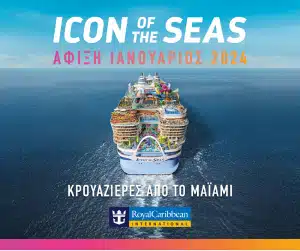The environmental impacts of port activities and infrastructure are substantial, wide-reaching and multidimensional. They include polluting emissions, soil and water contamination, noise and vibration, with considerable health consequences on coastal communities and port cities’ residents.

CHIEF CONSULTANT FOR THE EUROPEAN COORDINATORS FOR MOTORWAYS OF THE SEA (MOS)
Port activities also cause a wide range of external economic costs associated with congestion, waste management, land degradation, light and visual intrusion. They are also responsible, directly and indirectly, for the loss of biodiversity and coastal erosion. At the same time, they connect maritime and land transport networks, playing a critical role in mitigating the effects of climate change.
In the last decade, we have assisted maritime administrations and port authorities in terms of their effort to decarbonise the shipping sector, including the ports. Maritime transport in the EU accounts for approximately 13% of its transport GHG emissions. A clear commitment of the European Green Deal should result in a drastic cut of pollution and reduction in greenhouse gas emissions (GHG).

A real Green Deal Master Plan for European ports
In this framework, the European Commission has just released its Sustainable and Smart Mobility Strategy, setting very ambitious targets for the coming decades till 2050. In this framework, European Ports are recognised as critical nodes for our international connectivity and crucial gateways supporting maritime transport, boosting our internal and external trade. They are already multimodal mobility and transport hubs, linking all the relevant modes but, as complex nodes, most of them have still to set a real Green Deal Master Plan. They have “to become new clean energy hubs for integrated electricity systems, hydrogen and other low-carbon fuels, and testbeds for waste reuse and the circular economy”, improving air quality and thereby contributing to better living conditions of practitioners and nearby residents.

Such a Master Plan shall not overcome the existing regulatory tools already used in several countries and ports but be coherent with the territorial, urbanistic and economic development. It should set a clear and distinctive position of the port itself with its specific operations, services, traffic type, shaping their 2030 energy and ecological transition and describing a road map to get there, reducing carbon footprints and adjusting their business to a fast-decarbonising world.
There might be several resources to share in each port region, like hydrogen, waste, water, electricity, carbon dioxide, and steam. The Green Deal Port Master Plan should precisely identify those resources, select the most promising industrial symbiosis scenario, and define the most suitable business case using specific tools such as the triple layer Business Canvass Model, including socio-economic considerations.
With this approach, ports can decide how to decarbonise their operation (e.g., onshore and offshore renewable generation) and their clients (port operations and maritime transport). The possible options include: the implementation of cold ironing or other alternative fuels chains to power vessels, the valorisation of local industrial symbiosis and circular economy loops, the supply of green energy for port industries and operations, the reconversion of industrial areas in eco-district, supporting the use of low carbon solution for the multimodal transport chain. Clearly, the most distinctive position and the highest CO2 decrease can be gained by becoming the energy/logistic hub for the whole decarbonisation of the region via green energy import/export using transport vectors such as green hydrogen, e-ammonia and e-methane.
A vital dimension of this Master Plan is the stakeholder interaction. From a strategic point of view, the challenge in approaching engagement initiatives of a green port towards local communities is managing a multitude of stakeholders (institutions, associations, opinion leaders, public opinion, media, etc.) who impact the port’s projects and business. In this respect, the Green Deal Master Plan should include a specific stakeholder engagement programme, a tool specially made for approaching a territory and local communities, taking care of their expectations, and creating a helpful integration to develop a positive climate based on trust and goodwill. Through this approach, several direct outcomes can be obtained, such as consolidating relations with the local community and stakeholders, reinforcing commitment towards social and environmental issues, and improving corporate reputation.
The priorities for the digital and green transitions
Several EU policies and funding programmes are already existing or will be soon released to support the Smart and Sustainable Mobility Strategy. From the maritime transport perspective, possible tools to feed the Green Deal Master Plan are already depicted in the Motorways of the Sea (MoS) Detailed Implementation Plan, delivered in June 2020 by the MoS European Coordinator (Prof. Kurt Bodewig) as the strategic policy document within the Trans European Network for Transport Framework. The Detailed Implementation Plan is structure around three main pillars: sustainability, connectivity and digitalisation. All of them include specific indications on which port-related measures should be prioritised.
In term of sustainability, the mid-term priority for maritime vessel should be on non-fossil fuel power, even if LNG is regarded as an interim transitionary solution and still necessary for the marine sector on its way to zero/low emission fuels. Therefore, the deployment of alternative fuel shore-side infrastructure and bunkering vessels is considered a priority. The shore-side power supply should be further developed, particularly in ports situated close to densely populated areas. Port energy efficiency initiatives and shifting from fossil fuel-based power sources to renewable energy sources should be further promoted. Particular attention is also put into waste reception facilities linked to the Circular Economy Package and EU Plastics Strategy. Regarding physical infrastructure in ports, the main focus is on projects that remove persistent bottlenecks in the loading operations and in the development of direct hinterland connections, preferably by rail and inland waterways.

Finally, on smart digitalisation, several priories are highlighted: optimisation of the port call process, interoperability between various stakeholders and data sharing systems following the federated network of platforms approach, efficient customs operations and cargo clearance tools and the related digitalisation of administrative processes and the trade facilitation on corridors (i.e. the concept of international fast trade lanes, a set of harmonised and interoperable tools such as business process modelling, software solutions, operational guidelines and governance models aimed to trade facilitation on corridors). All of these smart, sustainable and seamless tools can be considered as one element of the overall Green Deal Port Master Plan and should be adapted coherently with the main features and specificity of the port.
Finally, we can undoubtedly affirm that we are currently seeing an incredible vitality of ports in the field of the green transition, as demonstrated by the great oversubscription to the last Horizon 2020 call on Green Ports. However, to avoid following “marketing” trends, it is highly suggested that ports developed their own Green Deal Port Master Plan as soon as possible to coherently design its own midterm future, aligned with the industrial and economic capabilities of its territory, serving its operations and services and supporting the achievement of the best distinctive position to compete in the shipping industry.
- The opinion expressed by the author does not necessarily reflect the position of the European Commission









